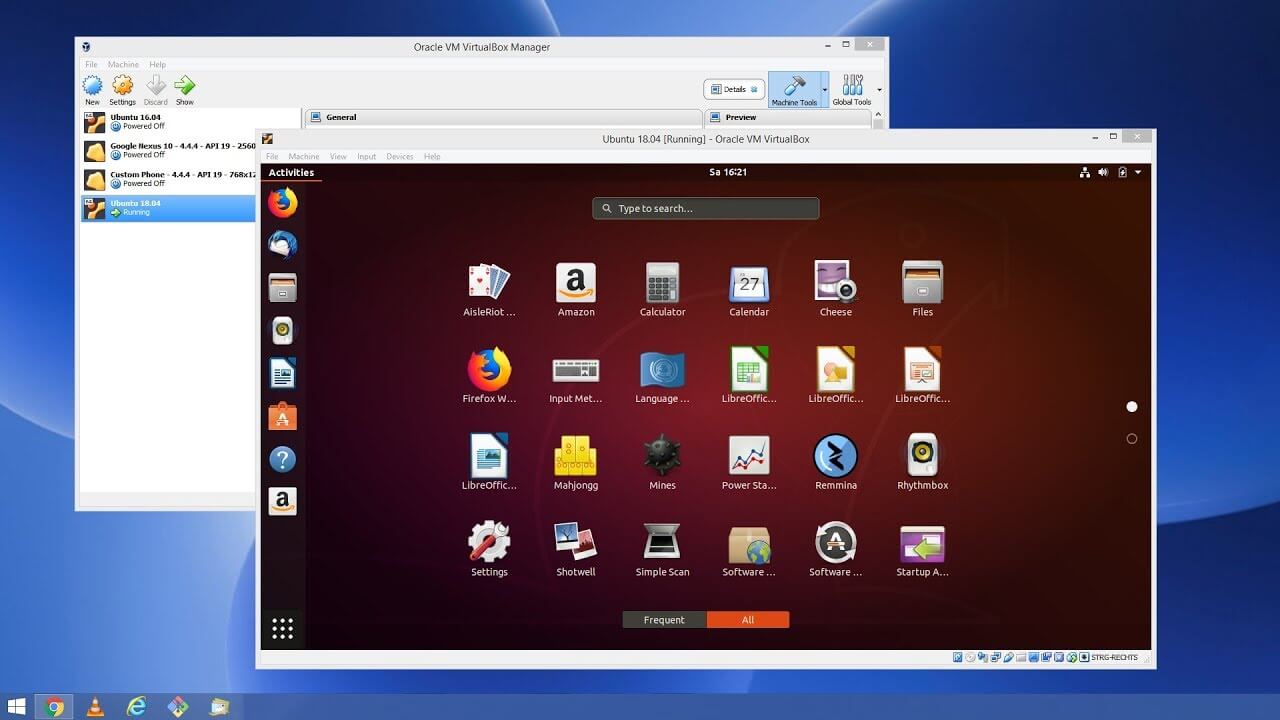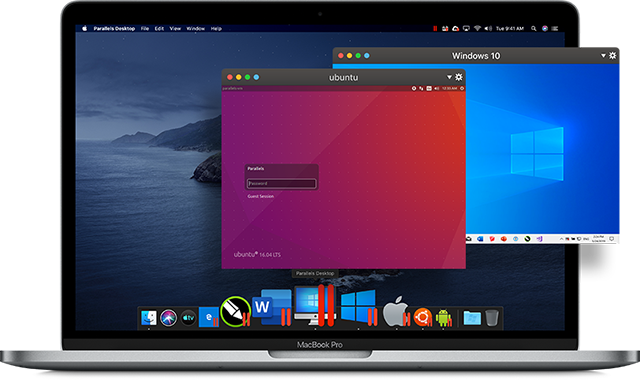Quartus can run surprisingly well on Mac when paired with Virtualbox and Ubuntu. Unlike other solutions using Windows and Parallels, all of the software used in this method is completely free! There are a few hurdles to overcome in order to get everything running correctly, however this guide will walk you through all of the necessary steps. With a dual boot system the operating system is installed to a seperate partition on the hard drive, or a seperate hard drive all together. When booting up the computer, the user is given the option as to which operating system to load. In our case we could load Ubuntu on our Mac instead of OS X. For the Name & operating system, write down the name of the virtual machine. In my case, I will write down “macOS Catalina”. Select “Mac OS X” for the Type and Mac OS X (64-bit) for the version. For Memory, I recommend you to go with the 50-50 rule which is to assign 50 to 60% of your computer’s memory for the virtual machine. Mac OS is a computer operating system developed by Apple.This is a operating system with beautiful interface, however, to own a the computer of Apple with this operating system, you need to use a lot of money, normally with the double price than that of common computers using Windows operating system.Fortunately, you can experience the Mac OS right on your computer by installing a Mac OS.
This article will tell you how to install it’s MacOS version and install Ubuntu Linux virtual machine in virtualbox. Double click the virtualbox icon to open it. I’ve set them to,Just to get those alert prompts at the top out of the way, click the,For the sake of this walkthrough, we’ll.
With the aid of virtual machines, which are available nowadays, you don’t need to install two operating systems on the same computer, in order to do different tasks. Among the most popular programs to run virtual machines, Oracle VirtualBox is a program, which deserves special mention, as it is free, lightweight. It has almost everything, a user needs to run virtual machines. It comes with a lot of new functionalities, and can efficiently handle operating systems, developed by multiple manufacturers.
But, due to some system limitations on older operating systems, you might not get the advantage of numerous new features, which might be offered by your computer hardware. In such cases, Oracle came with a solution of Extension Pack for VirtualBox, which can be installed, in order to get the extra hardware functionalities, which is present on your computer. The VirtualBox extension Pack is platform independent, which means you can install it on any of the existing operating systems, provided VirtualBox is installed on your computer.
 How to install VirtualBox extension Pack on any platform running VirtualBox
How to install VirtualBox extension Pack on any platform running VirtualBoxHow to install VirtualBox extension Pack on any platform running VirtualBox
Wait, do you need it!
Before proceeding with the installation of extension pack for your VirtualBox, it is recommended that you check, whether you need it.
- The extension Pack comes with support for USB 2.0 and 0, which can be helpful, if you are having a new computer, and want to use those ports with maximum potential, within your guest operating system, while using VirtualBox.
- The extension Pack also come with Intel PXE Boot ROM, which is the abbreviation of Pre-Boot Execution Environment, and you will need that while making your guest operating system boot from the network.
- If you need nativedisk encryption features, on your guest operating system, you can also get the feature with the Extension Pack. Apart from the three most important features, which you can get, you can also get bonus functionalities, which include VirtualBox RDP, NVMe features and many more.
Mac Os Virtualbox For Ubuntu Usb
In most of the cases, the features, which are mentioned here, are not necessary for normal users, and thus, it is not present in the default package of VirtualBox. But if you are a developer, and you really need those functionalities, you should not think once again before you download and install a VirtualBox Extension Pack.
Downloading and installing the extension Pack on all platforms
Downloading the extension Pack for VirtualBox
Step 1: Visit the official website of VirtualBox, which is https://www.VirtualBox.org/, and click on “Downloads” on the left panel of the webpage.
Step 2: Find out VirtualBox Extension Pack, and click on the link, which says “All Supported Platforms”, in order to start downloading the extension Pack directly.
You can also click on the following link, https://download.VirtualBox.org/VirtualBox/5.2.6/Oracle_VM_VirtualBox_Extension_Pack-5.2.6-120293.vbox-extpack, to start downloading the Extension Pack without going through all the above steps.

Installing the extension Pack for VirtualBox on Windows, Mac OS, and Ubuntu Linux
Step 1: Locate the downloaded file, and it will come with the extension “.vbox-extpack”. Double click on the file.
Step 2: A new window will open, asking you, whether you want to install the Extension Pack for VirtualBox. Just click on “Install” to start installing the Extension Pack.
Step 3: Scroll down to the end of the Terms and Conditions page and click on “I agree”.
After successful installation, you get a message as shown in the below screenshot…
Installing the extension pack on VirtualBox Portable
Note: The Portable VistualBox is only available for Windows machine. So, if you are running on Windows 10, Windows 8 or Windows 7 then only you can follow or use the Extension pack on Portable VirtualBox.
Installing the Extension Pack on a portable version can be a little tricky, but you should know the correct method to do it.
Step 1: Open VirtualBox Portable and click on “File”
Step 2: Click on “Preferences”, which will possibly the first on the list.
Step 3: In the “Preferences” window, go to “Extensions”.
Step 4: On the right side of the window you can find “Adds New Package”. Click on that.
Step 5: Locate the VirtualBox Extension Pack, with the extension “.vbox-extpack”.
Step 6: Click on Install, Accept the “Terms and Conditions”, and the installation will start.
The installation will take hardly a few seconds, though it depends upon your system. Click on “OK” to finalize the installation. Once the installation is complete, you can easily configure your existing or new guest operating systems to take advantage of the extension Pack, by using all the latest features, which are available.
How to Remove or Uninstall Oracle VirtualBox Extension Pack
The above method to install Extension Pack on VirtualBox is not only limited to portable editions, but it also works perfectly on other editions. The following method can even help you to remove any old or unused Extension Pack.
Step 1: Click on File from the Virtualbox Menu and select the Preferences option.
Step 2: Select the Extension option and just select the package you want to uninstall.
Step 2: Click on cross icon to Remove Selected Package.
Step 3: Click on “Remove”, in the new window, which appears and you are done…

A final note on Oracle VM VirtualBox extension pack
As the VirtualBox extension Pack comes with the file extension “.vbox-extpack”, you should keep VirtualBox installed on your computer, to install the Extension Pack. In case you’re not having VirtualBox, the Extension Pack will not be recognized by your operating system.
SEE:
Hi,Mac Os For Virtualbox Ubuntu
I have installed Virtualbox 6.0 on my Mac OSX (Mojave) with ubuntu 18.04.1 LTS (Desktop) as my guest OS. Guest OS installation went fine. However, the desktop screen is just too tiny to read anything. After installing Guest additions, I am getting a blank screen (not even login prompt). How should I proceed?Other trials
Mac Os Catalina Virtualbox Ubuntu
I then downloaded previous versions of Virtualbox 5.20 and 5.18. The screen size is a little better but still isn't still full even after installing guest additions. Tried to attach the screenshot but is too big.